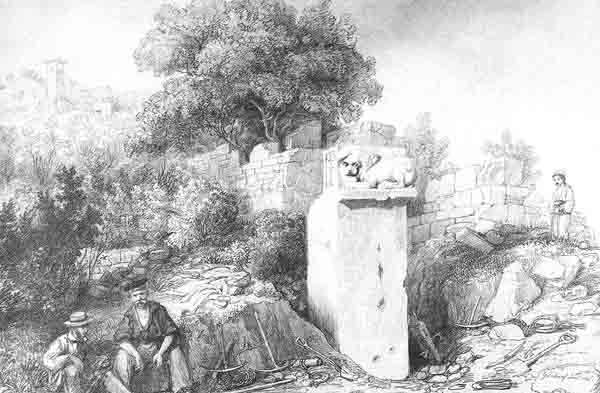Image Details

British Museum
Take five. With pickaxes, shovels and ropes scattered about them, archaeologists take a break from uncovering the early-sixth-century B.C.E. Lion Tomb from Xanthos, in the ancient Lycian district on the southwestern coast of Turkey. As drawn by artist G. Scharf, the limestone lion warily eyes the men as he grips a bull’s head between his forepaws.
Soon after the Phoenicians adopted above-ground tombs in the ninth or eighth century B.C.E., the monuments began to appear in Anatolia and Lycia. A predecessor to the Pozo Moro monument, this tomb type was then exported to the wider Phoenician world of North Africa and Spain.
